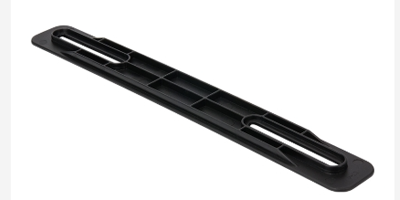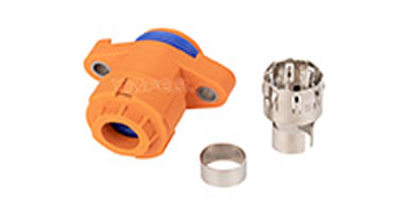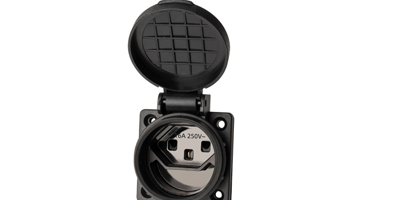In the world of handles, the Stretchable Handle has emerged as a novel alternative to the long-established Traditional Fixed Handle. This article aims to conduct a detailed comparison and evaluation of the two, considering various aspects such as functionality, usability, durability, and aesthetics.
I. Functionality
A. Adjustable Length of Stretchable Handle
The most prominent feature of the Stretchable Handle is its adjustable length. This allows users to customize the handle according to their specific needs. For example, when carrying a heavy suitcase, one can extend the handle to a more comfortable height, reducing the strain on the back and arms. In contrast, the Traditional Fixed Handle has a fixed length, which may not be suitable for all users or all types of usage scenarios. A person with a taller stature might find a fixed handle too short, causing an awkward and uncomfortable grip.
B. Fixed Position and Stability of Traditional Fixed Handle
While the Stretchable Handle offers flexibility in length, the Traditional Fixed Handle excels in stability. Since it is fixed in position, there is no risk of the handle accidentally slipping or changing length during use. This is particularly important in applications where a stable grip is crucial, such as in some industrial tools or heavy-duty equipment. For instance, a fixed handle on a power drill provides a reliable and consistent grip for the operator, ensuring precise control during drilling operations.
II. Usability
A. Ease of Use in Different Scenarios for Stretchable Handle
The Stretchable Handle's adaptability makes it highly user-friendly in a variety of situations. It can be easily adjusted to fit different body sizes and usage requirements. In a travel context, it enables travelers to switch between pulling a suitcase with a long handle for a smooth ride on flat surfaces and shortening the handle for maneuvering in tight spaces like crowded airports or narrow corridors. Moreover, it can be adjusted to accommodate different carrying positions, such as a lower position for children or individuals with limited arm strength.
B. Familiarity and Simplicity of Traditional Fixed Handle
The Traditional Fixed Handle, on the other hand, has the advantage of simplicity and familiarity. People have been using fixed handles for a long time, and they are accustomed to their straightforward operation. There is no need to worry about adjusting the handle or potential malfunctions related to the adjustment mechanism. For example, in a household broom or a basic toolbox, the fixed handle is intuitive to use, and users can immediately grasp and operate the tool without any learning curve.
III. Durability
A. Complexity and Potential Wear of Stretchable Handle Mechanism
The Stretchable Handle's adjustable mechanism, while innovative, also brings some challenges in terms of durability. The moving parts and the locking mechanism that allows for length adjustment are subject to wear and tear over time. Frequent use and exposure to external forces can cause the handle to loosen or the adjustment function to deteriorate. For example, in a suitcase that is frequently checked in and handled roughly during air travel, the Stretchable Handle may experience more wear compared to a fixed handle.
B. Robustness of Traditional Fixed Handle
The Traditional Fixed Handle, being a simpler and more static design, generally exhibits greater durability. With fewer moving parts, there are fewer points of failure. It can withstand heavy loads and rough handling without the risk of internal mechanism damage. A fixed handle on a piece of industrial machinery, for instance, is designed to last for a long time under harsh working conditions, as it does not have the vulnerable adjustable components of a Stretchable Handle.
IV. Aesthetics
A. Modern and Versatile Look of Stretchable Handle
The Stretchable Handle often has a more modern and sleek appearance. Its adjustable nature gives it a sense of versatility and technological sophistication. It can blend well with contemporary designs, especially in consumer products like high-end luggage or modern furniture. The ability to change its length and shape can also contribute to a more dynamic and eye-catching visual effect, making the product it is attached to stand out.
B. Classic and Simple Style of Traditional Fixed Handle
The Traditional Fixed Handle, with its unchanging form, has a classic and simple aesthetic. It conveys a sense of reliability and timelessness. In some traditional or rustic settings, such as in antique furniture or old-school tools, the fixed handle's simplicity fits well with the overall design theme. It gives an impression of sturdiness and authenticity that has been associated with traditional craftsmanship.
In conclusion, both the Stretchable Handle and the Traditional Fixed Handle have their own strengths and weaknesses. The choice between them depends on the specific application, user preferences, and the trade-offs one is willing to make in terms of functionality, usability, durability, and aesthetics. Whether it's the flexibility of the Stretchable Handle or the stability and simplicity of the Traditional Fixed Handle, each has its place in the diverse world of handle design and usage.







